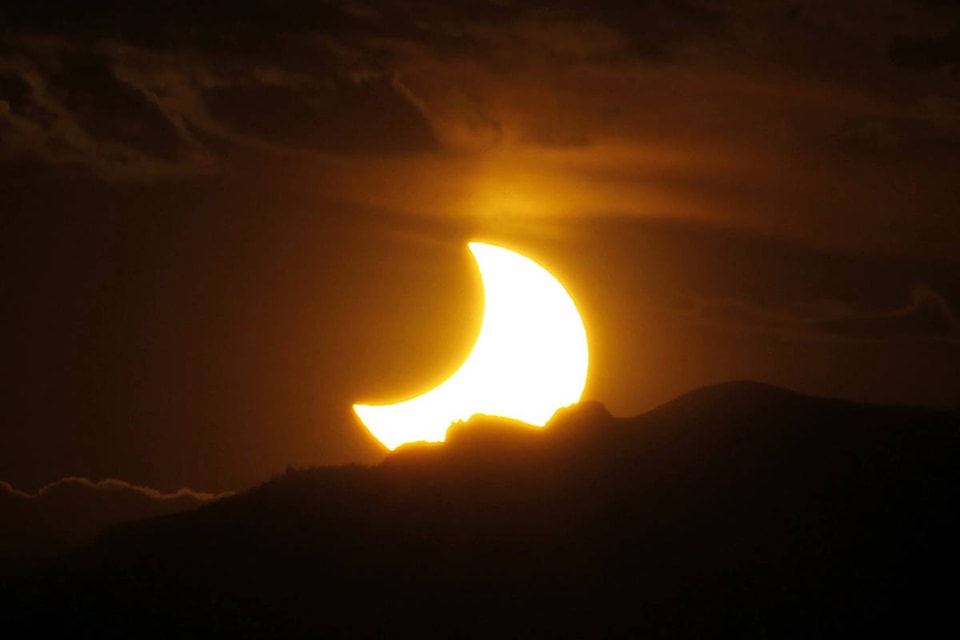Though prime viewing is a little further south of Central Alberta, for the first time in a generation a solar eclipse will roll through North American skies.
For Red Deer, it will be a partial solar eclipse, peaking at 11:34 a.m. on Aug. 21. Approximately 70 to 80 per cent of the sun will be covered by the moon as it transits between the earth and the sun.
The eclipse starts at 10:22 a.m. and finishes at 12:49 p.m.
But, because it is only a partial eclipse, the sun’s light can still damage eyes and people should not look directly at the sun during the eclipse in Central Alberta, said Ken From, owner of All-Star Telescope in Didsbury.
“Part of the sun will always be out and eye protection will always be needed. There’s no safe time to look at the sun without proper protection,” said From.
“This is one of the most unique, incredible and awesome natural occurring events in nature.”
Because a partial eclipse should not be looked at with the naked eye, there are methods to observe the astronomical event. People can use a pinhole and watch the shadows to see how the moon moves and covers the sun, purchase viewing aids that have a film sheet that filters out 99.9 per cent of the sun or use camera and telescope lens filters.
The last total solar eclipse to cross through North America was in February 1979. The path where you can look at it with the naked eye is only about 160 kms wide and starts in Oregon and cuts across the United States through to North Carolina.
This summer’s eclipse path of totality, where the moon will pass directly in front of the sun, runs through 14 U.S. states. In Canada, Victoria will see the highest coverage, with 89 per cent of the sun covered by the moon.
In Alberta, Calgary will have 81 per cent coverage while Edmonton will be about 74 per cent.
“A total solar eclipse happens about once every 18 months, but often it’s in very remote locations such as over the ocean or the Antarctic,” said From. “It’s been a generation since people have had the opportunity to easily travel and see a solar eclipse in North America.”
The next total eclipse that will be visible in Canada will occur on April 8, 2024. The path of totality will pass through Ontario, Quebec, New Brunswick, Prince Edward Island and Newfoundland.
